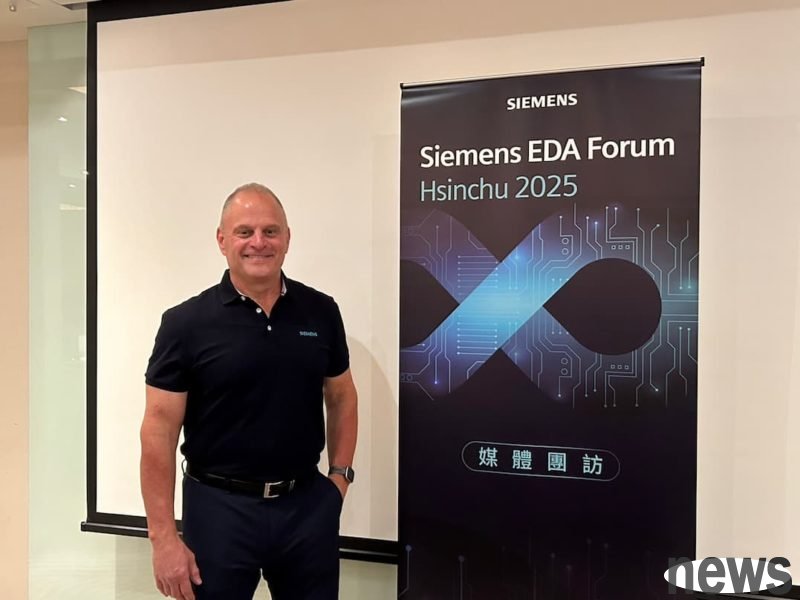
Ximen EDA, a subsidiary of Ximen Digital Industrial Software, will hold its annual IC Design Technology Conference "Siemens EDA Forum Hsinchu 2025", which will be held by executive director Mike Ellow, and believes that it is now facing "mega-level opportunities and challenges". Looking back, it took about 30 years for semiconductor industry to reach USD 10 billion from its inception; but now, it only takes four years to double from USD 1 trillion in 2030 to USD 2 trillion by 2034.
Ellow observed that the current global trends are mainly in software, AI, sustainability, and semiconductor supply chains. He said that the well-known risk-capitalist Mark Anderson once said, "Software is eating the world." But NVIDIA executive chief Huang Renjun believes that "AI is eating software." Mike Ellow takes Sir Bin as an example and says that the company says it is a software company, which means that industry concepts have changed drastically.
In addition, the biggest limitation of AI development is not technology, but the imagination of engineers and humans. In particular, the adoption of generative AI is faster than any technology and has a wider impact; in the sustainable development part, enterprises should not only effectively utilize natural resources, but also achieve business and profit goals. Under these challenges, semiconductor industry is the key to help enterprises achieve goals in commercialized ways.
From another design perspective, Ellow pointed out that no matter whether 3DIC is integrated in a different way, more and more are integrated towards small chips. At the same time, chips below 4 nanometers will be more realized through small chips, but they still face many challenges. He said that 75% of the progress of advanced projects is currently delayed, and the proportion of successful films that are first-time film-submitted is even less than 15%. In addition, the cost and time required for advanced processes are increasing continuously. On the other hand, the problem of talent shortage is becoming increasingly serious. New engineers who graduate from universities cannot fully meet the needs of their industry. How the engineering team continues to improve has also become the current key topic.
Mike Ellow pointed out that there are mainly difficulties in multi-domain system design. For example, current design is no longer just pure hardware, but combines software, mechanism and electronic components. This cross-domain integration can easily lead to indeterminate interaction behavior, especially under the software definition design architecture, where system effects beyond expectations often occur; then there is a challenge beyond the crystal density, not just stacking more transistors, how to effectively manage heat, mechanical stress and interaction problems, especially in Under the structure of 3DIC, the feasibility and reliability of manufacturing have become more critical; the third is the ecological cooperation barrier, which not only involves cross-departmental cooperation within a single enterprise, but also extends to real-time cooperation among multiple enterprises, including real-time data exchange, standardization of interfaces and specifications, and cross-organization collaboration processes. These must be integrated more closely so that in order to effectively grasp the expected cost, development process and function realization in the wafer integration process.
As the system becomes increasingly complex, how to conduct effective system analysis, especially the design of access rights and the creation of potential profit opportunities, has become a key issue. Among them, the development of Digital Twin technology plays a key role. Through multi-layer stacking and simulation, not only can the system be predicted, but it can also grasp its impact on future operation and design decisions.
At the same time, configuration management issues have gradually come to an end. How to clearly grasp the interdependence and changes of software and hardware is the key to ensuring the stable operation of the system. Once configurations are misplaced or lack flexibility, it can lead to more complicated and difficult subsequent problems.
As for the reason why 3DIC technology can now achieve and promote vector production, in addition to the maturity of the process and the material, it is also closely related to the improvement of system integration capabilities. Only by optimizing design tools and EDA software support can we truly realize the potential of 3DIC and promote technological development to new milestones.
Extended reading: Resumed business for China! Ximen Talking about Layout Outlook: Taiwan is the focus of future investment and cooperation There will be no volume this year and next year! Wei Zhejia laughs at the future of robots: I need it one day too